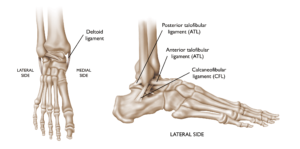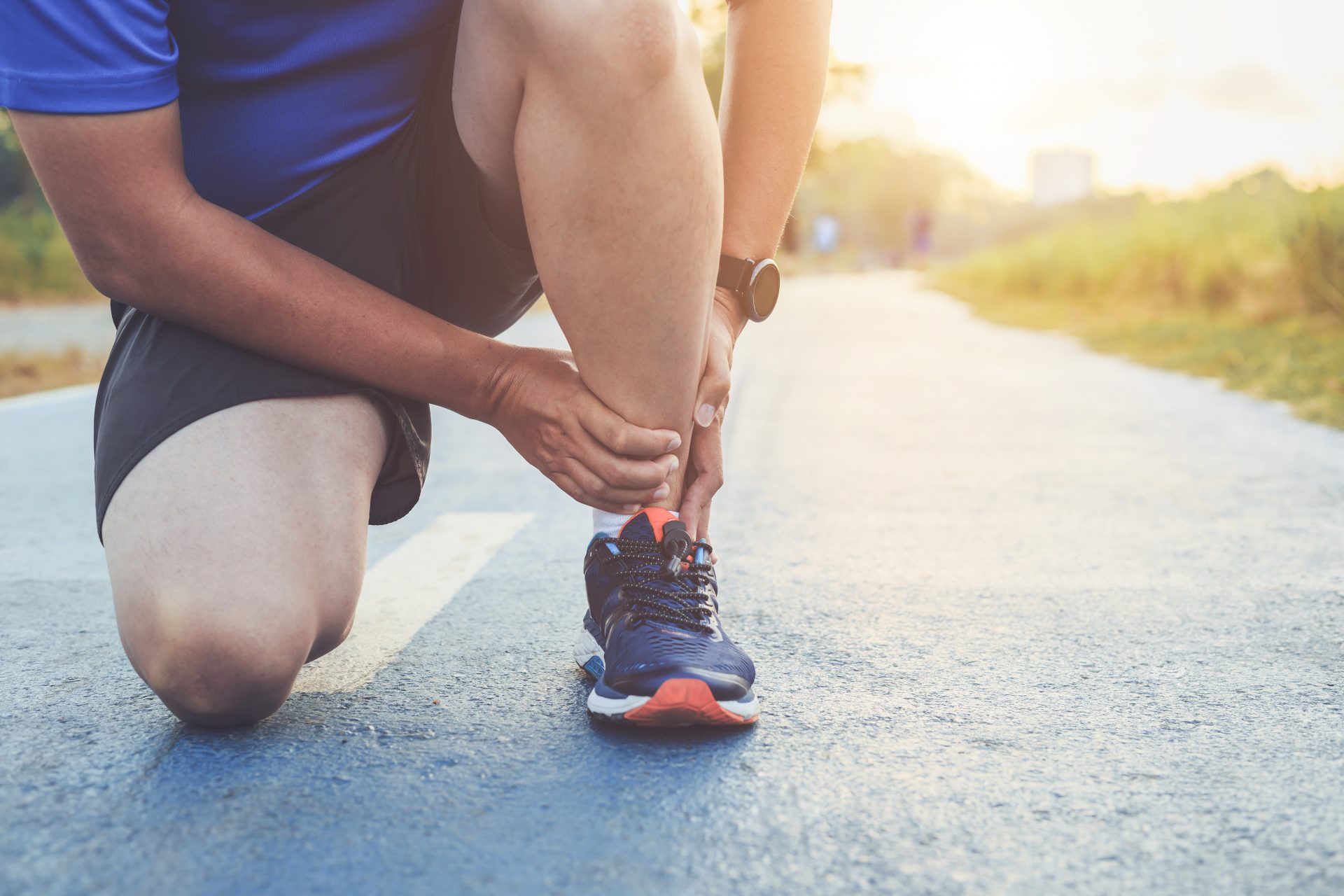Have you noticed that once you roll your ankle you tend to roll it again and again? This is known as chronic ankle instability, or repetitive ankle ligament sprains.
Anatomy
The ankle has an extensive ligamentous structure which prevents inwards and outwards movement of the ankle. The ligaments on the outside of the foot (prevent inwards ankle movement) are the ligaments that are most likely to sprain. This is because the ankle will usually roll inwards and with a pointed toe.

The most commonly torn ligaments are the anterior talofibular and calcaneofibular ligaments.
Cause of recurring sprains
Once these ligaments have torn, they lose some degree of their strength and flexibility. The body will heal the ligaments with scar tissue, however this scar tissue is not as strong as the original ligament. This scar tissue is more likely to tear or strain in the future.
The other role of ligaments is to maintain balance and a sense of awareness (proprioception) at the ankle. After an injury, your ability to control the ankle on an uneven surface is impaired and leaves you susceptible to further injury.
The more damage to the ligaments = more unstable ankle = more likely to sprain again
Symptoms
- Ongoing pain around the outside of the ankle
- Recurrent ankle sprains or ‘rolls’
- Ongoing swelling
- Poor balance and postural control
- Feelings of instability
- Muscle weakness surrounding the ankle
How can Physiotherapy help?
Your Physiotherapist can assist with providing you with an extensive and individualised rehabilitation program. A combination of rehabilitation, a manual therapy and a gradual return to sport program can help you get back into sports and prevent future ankle sprains.
Your Physiotherapy treatment will include treatments such as:
- Assessment of foot posture and other associated issues (knee, hip, core)
- Soft tissue therapy
- Joint mobilisations
- Balance and strengthening exercises specific to your sport/activity
- Ankle taping or braces
We strive to get you back to your activity as soon as possible and with a reduced chance of further injury.

